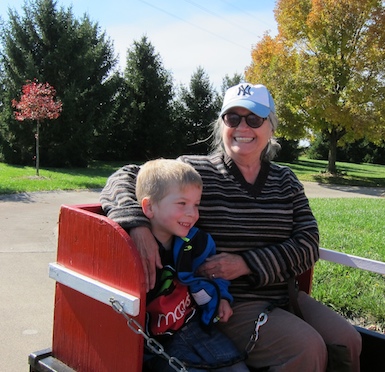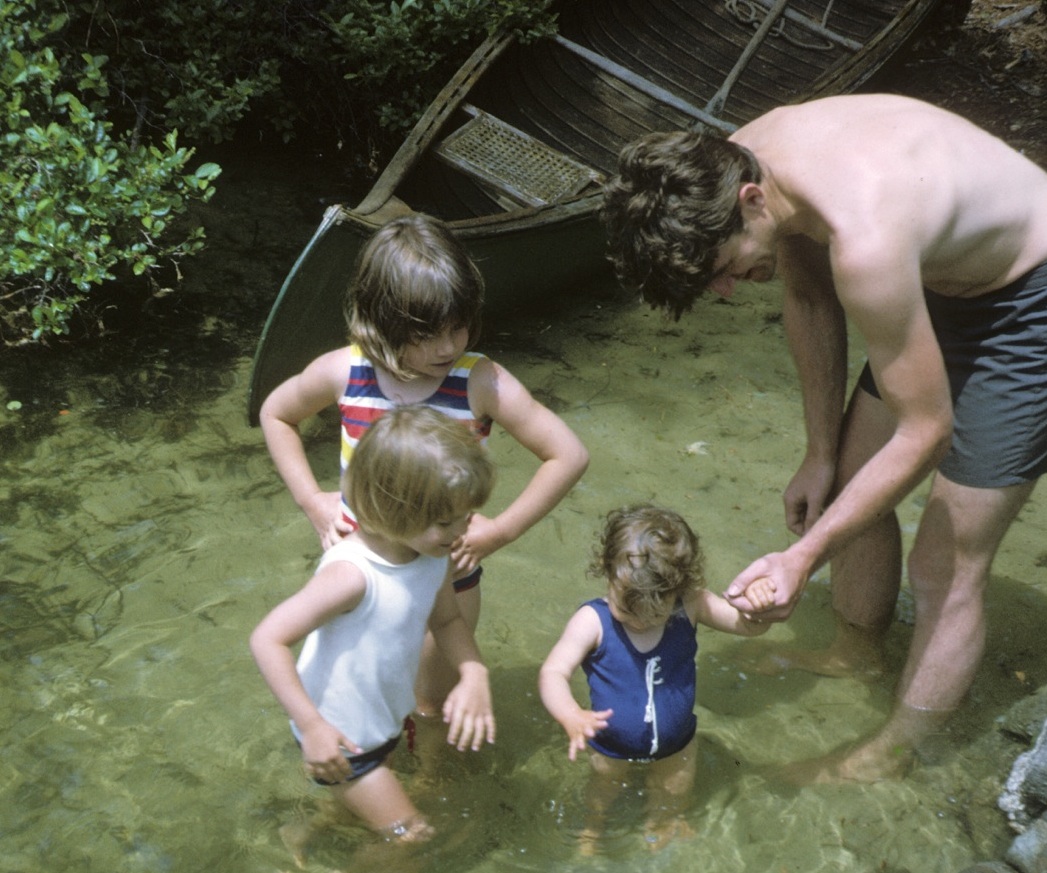Real life is enough, don't you think?
July 28, 2013 • 15 Comments • Posted in blindness, guest blog, guide dogs, Mike Knezovich, Seeing Eye dogs, UncategorizedHere’s a guest post from my husband Mike Knezovich:
Beth’s in two distinct minorities: She’s blind. And she’s one of the minority of people who are blind who also use guide dogs. (I’m leaving out that other ultraminority she’s in — you know, the group of people who have had a benign tumor the size of a marble on their aortic valve).
Which is all to say, she’s even more memorable to people than she would otherwise be. (And that’s saying something.) Our friends and acquaintances are justly curious about her blindness — and equally or more curious about the guide dog companions she’s had over the years. Consequently, they take special note when they see articles or TV features about other people who are blind and especially about other blind people and their guide dogs.
So, a week or so ago when the Chicago Tribune ran a story about a war veteran who’d lost his eyesight in battle and who had to retire his first guide dog, lots of folks read it, loved it, and sent it to us or told us about it. Beth did read it and said it would push every sentimental button a human could have.
I didn’t read it because, well, I don’t read most of this stuff because — not to be too flip here — I live it. I don’t need my heartstrings tugged, I know about blindness, I love Beth’s dogs and I’ve lived through three retirements. I don’t need to seek out heart-wrenching experiences. And, to be honest, the writers often sentimentalize the stories in ways that I find a little condescending and often find impossible to believe.
Well, apparently, this story about the veteran was truly unbelievable. As in totally false. Yesterday, via The Beachwood Reporter — a fabulous Web site from Steve Rhodes that keeps an eye on journalism in the Chicago area and sometimes beyond — this little link popped up on my Facebook page:
http://www.chicagotribune.com/news/local/ct-met-sunday-reader-note-0728-20130728,0,1907352.story
It’s lengthy correction from the Tribune’s editors. An excerpt:
A July 21 story about a blind man and his guide dog contained major inaccuracies.
The story stated that the man was an Army veteran who lost his sight when a roadside bomb exploded. In fact, the man, John Maley, acknowledged in an interview late last week that he was not in the Army and that he lost his sight to diabetes.
Problems with the story came to light after a reader contacted the newspaper questioning the account of how Maley became blind.
The inaccurate information was provided to the Tribune by Maley, and we failed to seek corroboration for his story.
Because of that, the story contained a five-paragraph narrative of the explosion that was not true. In fact, Maley was not in the Middle East in 1991 and did not serve in the Gulf War, he said. Also, in the headline Maley is referred to as a veteran, which Maley now says is not true.
I didn’t read the story (and can’t now, because it’s no longer online), but this news left me sad and infuriated at the same time. Sad because the guy apparently needed and liked the attention so much he could tell that elaborate lie. Sad because really, I know enough to know he was worthy of a story without having been a veteran. Blindness is really really hard. Diabetes is really really hard. Working with guide dogs is both a blessing and an enormous responsibility. A good reporter and storyteller could find these stories and weave a compelling piece about the facts — and the story wouldn’t need embellishment.
The infuriated part comes from the insult he gave to veterans who did serve and were disabled during their service, and especially from the sloppy, irresponsible journalism that seems to be getting more commonplace. It ain’t the blogosphere I’m talking about — it’s places like the Tribune and the NY Times and of course, cable networks of all political bents.
One other emotion — disappointment. Whether it’s movies or television ads or social media, it seems that only extreme-to-the-point-of-freakishness items get our attention. Which numbs us to the true, quiet stories and accomplishments of people around us every day. It’s like we live in a big reality TV show. And we don’t value our own lives, which are pretty rich if we take the time to realize it.
Actual reality provides plenty of drama, heartbreak, inspiration, tragedy and comedy — can we just stick with that?


